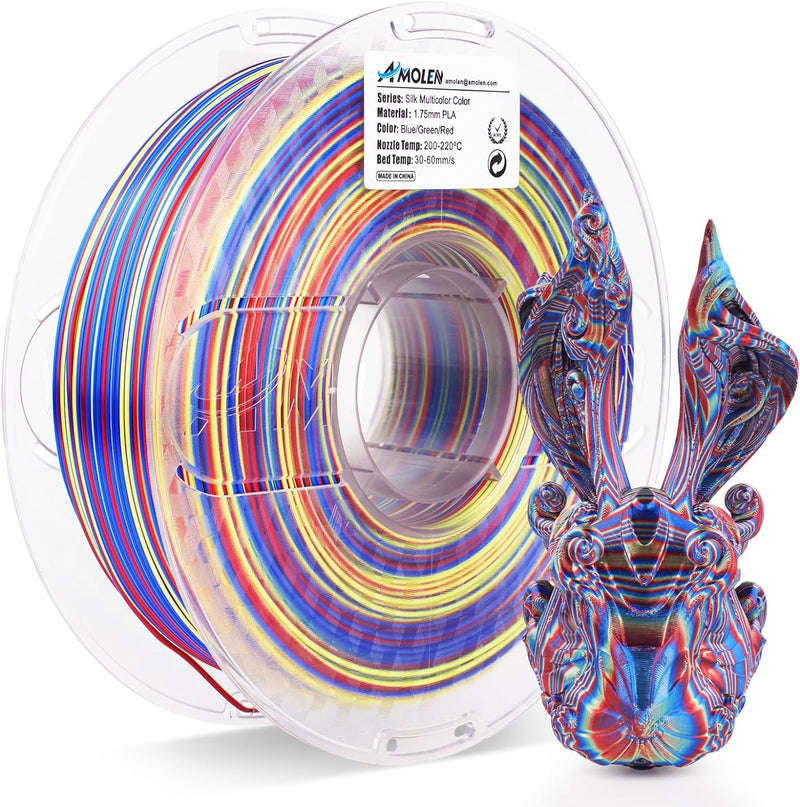Unlocking the Secrets of the Best 3D Print Filaments: What Every Maker Needs to Know!
Choosing the right 3D print filament is essential for achieving high-quality prints and a successful 3D printing experience. The filament you select directly influences the durability, flexibility, and overall aesthetics of your finished product. With a wide array of filaments available—each with unique properties—navigating this landscape can be daunting for newcomers and seasoned makers alike. In this article, we will explore various types of filaments, such as PLA, ABS, PETG, and TPU, and discuss what makes them stand out as the best choices for different projects. By understanding these materials and their characteristics, makers can make informed decisions that elevate their 3D printing endeavors.

Understanding 3D Print Filament Materials
When it comes to 3D printing, several filament types dominate the market, each offering distinct advantages. PLA (Polylactic Acid) is often the go-to choice for beginners due to its ease of use and non-toxic nature. It prints at lower temperatures and adheres well to the print bed, making it ideal for intricate designs and detailed models. On the other hand, ABS (Acrylonitrile Butadiene Styrene) is favored for its strength and durability, making it suitable for functional parts; however, it requires higher temperatures and proper ventilation due to fumes. PETG (Polyethylene Terephthalate Glycol-Modified) strikes a balance between the two, offering excellent strength, flexibility, and resistance to impact. Lastly, TPU (Thermoplastic Polyurethane) is known for its rubber-like flexibility, making it perfect for applications requiring a soft touch or elasticity. Understanding these materials and their unique properties is crucial to selecting the right filament for your specific project.
Properties That Matter for 3D Printing
When selecting a filament, several key properties should be considered to ensure optimal printing results. Temperature resistance is crucial, especially for parts that will be exposed to heat or mechanical stress. For instance, ABS is known for its higher heat resistance compared to PLA, making it a better choice for automotive parts. Adhesion is another vital factor; the filament's ability to stick to the print bed affects the success of the print. A good adhesion ensures that the print remains stable throughout the process, reducing the risk of warping or shifting. Printability, which encompasses the filament's flow characteristics and ease of extrusion, also plays a significant role. Filaments like PLA are often praised for their smooth printing process, while others like TPU may require more refined settings and techniques. By evaluating these properties, makers can tailor their filament choices to their project's specific requirements, leading to a more satisfying printing experience.
User Reviews and Experiences
User reviews provide invaluable insights into the strengths and weaknesses of various filaments. Many users rave about PLA for its vibrant colors and ease of printing, often sharing personal stories of successful projects ranging from prototypes to decorative items. However, some users caution about its lower durability compared to ABS, particularly for outdoor use or functional applications. ABS users frequently comment on its robustness but express concerns regarding the need for a well-ventilated space due to the fumes produced during printing. PETG has garnered positive reviews for its balance between strength and flexibility, with many makers appreciating its ease of use and minimal warping, making it a popular choice for both beginners and advanced users. TPU, while celebrated for its unique properties, often comes with mixed reviews, as users share experiences of having to fine-tune their printer settings to achieve the best results. By examining these user experiences, new makers can gain insights that guide their filament selection process.
Best Practices for Using 3D Print Filaments
Proper handling and storage of 3D print filaments are essential for maintaining their quality and performance. Filaments should be stored in a dry environment, preferably in airtight containers with desiccants to prevent moisture absorption, which can lead to printing issues such as bubbling or poor adhesion. It's also advisable to keep filaments away from direct sunlight, as UV rays can degrade certain materials over time. When printing, always ensure that the nozzle and bed temperatures are set according to the filament manufacturer's recommendations. Additionally, regular maintenance of your 3D printer, including cleaning the nozzle and ensuring proper calibration, can significantly impact the success of your prints. By following these best practices, makers can enhance the longevity and effectiveness of their selected filaments, leading to better overall results.
Final Thoughts on Selecting Your 3D Print Filament
In conclusion, selecting the right 3D print filament is a critical step that can determine the success of your projects. Each type of filament offers unique characteristics that cater to different needs, so it’s essential to consider your specific requirements and preferences when making a choice. As 3D printing technology continues to advance, new materials and innovations are constantly emerging, providing even more options for makers. By staying informed and experimenting with different filaments, you can unlock the full potential of your 3D printing experience and create stunning, high-quality prints that meet your creative aspirations.



